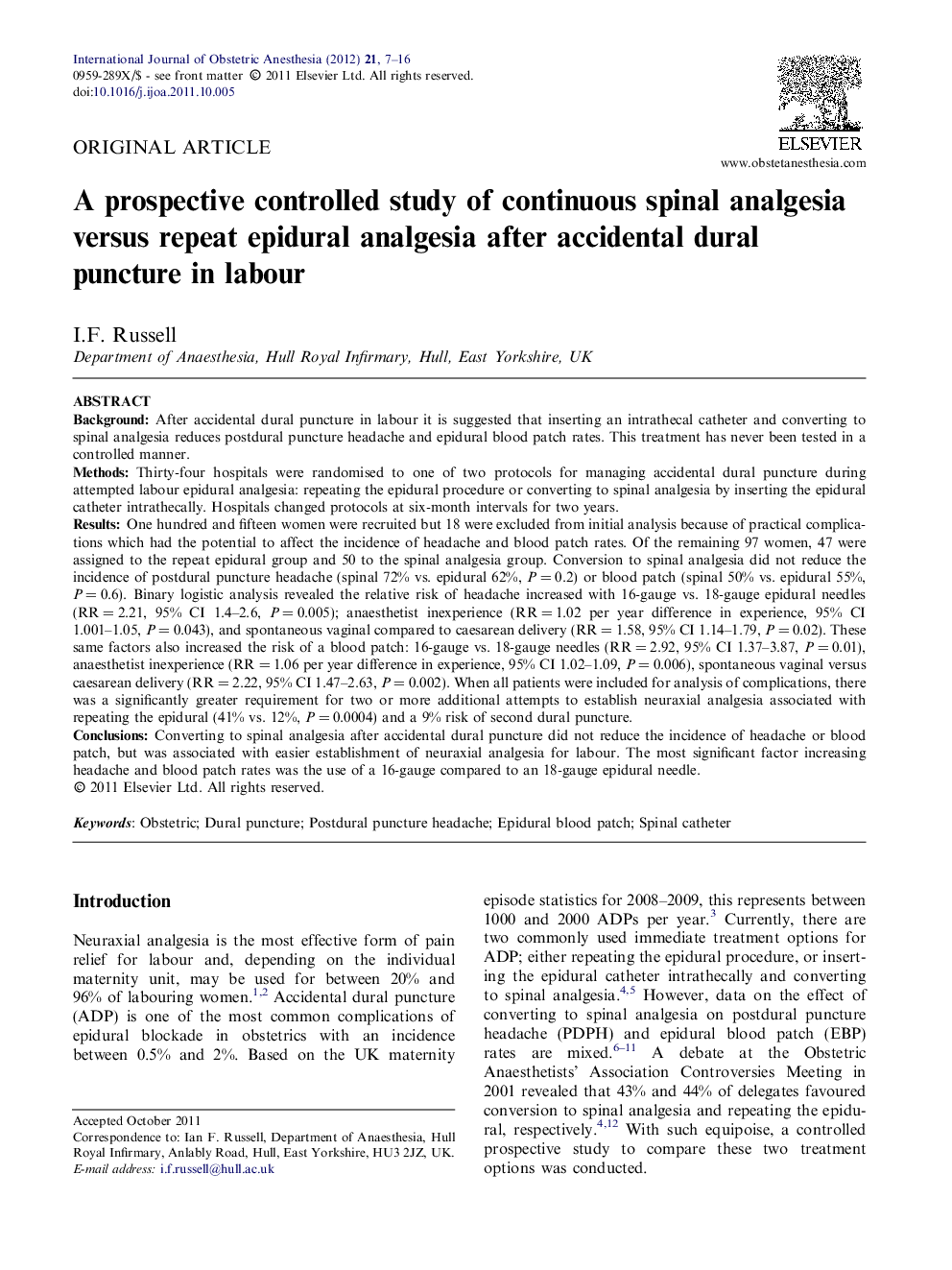| Article ID | Journal | Published Year | Pages | File Type |
|---|---|---|---|---|
| 2757745 | International Journal of Obstetric Anesthesia | 2012 | 10 Pages |
BackgroundAfter accidental dural puncture in labour it is suggested that inserting an intrathecal catheter and converting to spinal analgesia reduces postdural puncture headache and epidural blood patch rates. This treatment has never been tested in a controlled manner.MethodsThirty-four hospitals were randomised to one of two protocols for managing accidental dural puncture during attempted labour epidural analgesia: repeating the epidural procedure or converting to spinal analgesia by inserting the epidural catheter intrathecally. Hospitals changed protocols at six-month intervals for two years.ResultsOne hundred and fifteen women were recruited but 18 were excluded from initial analysis because of practical complications which had the potential to affect the incidence of headache and blood patch rates. Of the remaining 97 women, 47 were assigned to the repeat epidural group and 50 to the spinal analgesia group. Conversion to spinal analgesia did not reduce the incidence of postdural puncture headache (spinal 72% vs. epidural 62%, P = 0.2) or blood patch (spinal 50% vs. epidural 55%, P = 0.6). Binary logistic analysis revealed the relative risk of headache increased with 16-gauge vs. 18-gauge epidural needles (RR = 2.21, 95% CI 1.4–2.6, P = 0.005); anaesthetist inexperience (RR = 1.02 per year difference in experience, 95% CI 1.001–1.05, P = 0.043), and spontaneous vaginal compared to caesarean delivery (RR = 1.58, 95% CI 1.14–1.79, P = 0.02). These same factors also increased the risk of a blood patch: 16-gauge vs. 18-gauge needles (RR = 2.92, 95% CI 1.37–3.87, P = 0.01), anaesthetist inexperience (RR = 1.06 per year difference in experience, 95% CI 1.02–1.09, P = 0.006), spontaneous vaginal versus caesarean delivery (RR = 2.22, 95% CI 1.47–2.63, P = 0.002). When all patients were included for analysis of complications, there was a significantly greater requirement for two or more additional attempts to establish neuraxial analgesia associated with repeating the epidural (41% vs. 12%, P = 0.0004) and a 9% risk of second dural puncture.ConclusionsConverting to spinal analgesia after accidental dural puncture did not reduce the incidence of headache or blood patch, but was associated with easier establishment of neuraxial analgesia for labour. The most significant factor increasing headache and blood patch rates was the use of a 16-gauge compared to an 18-gauge epidural needle.
